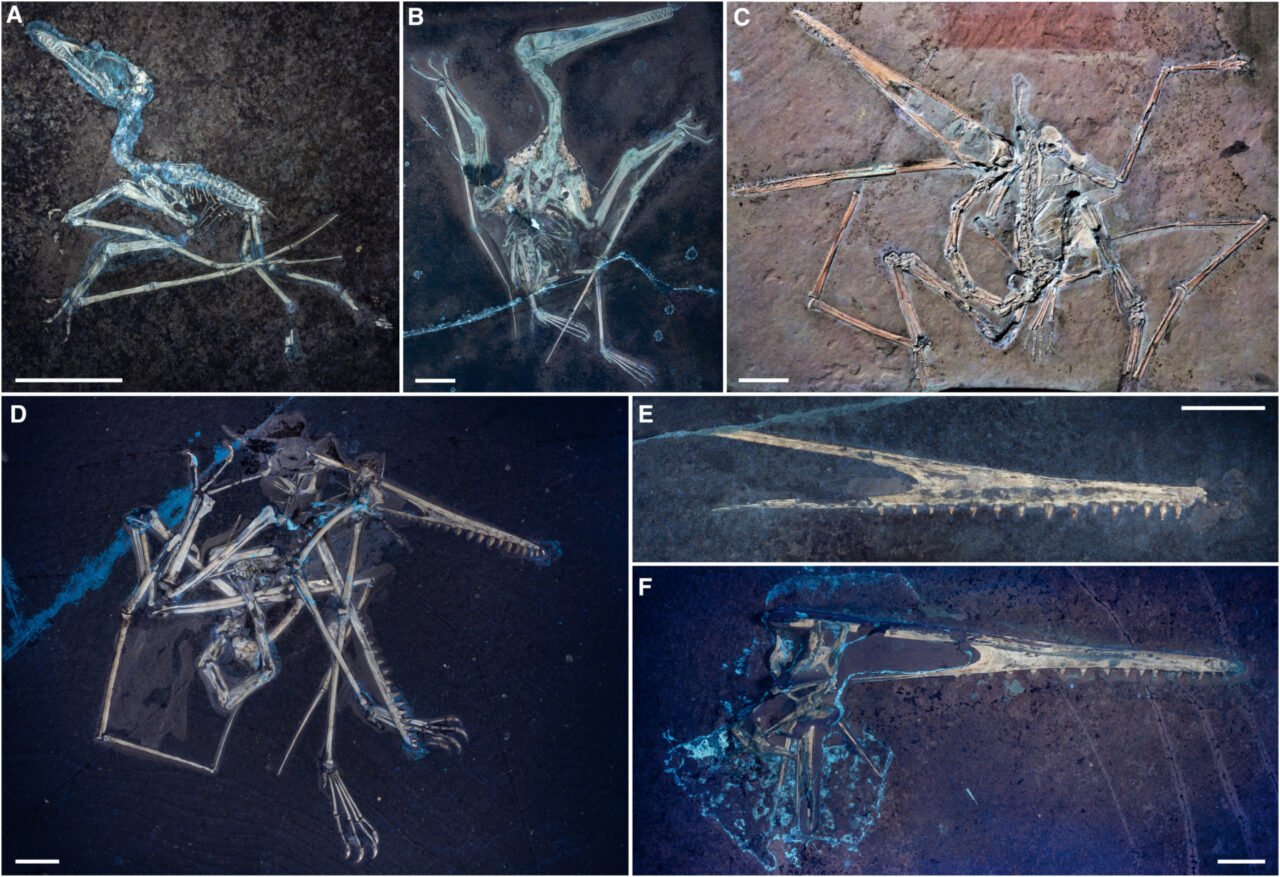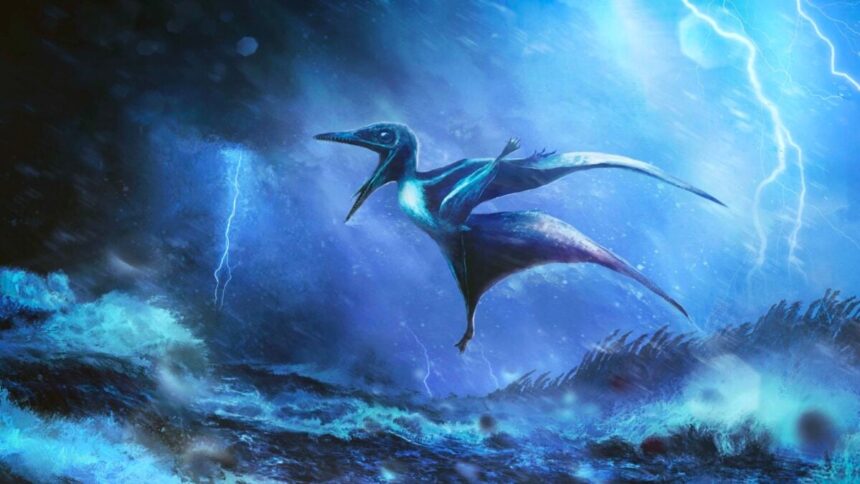The Solnhofen Limestone, a fossil hotspot in southern Germany, hosts a particularly rich array of baby pterosaur bones. That led paleontologists to believe that the animals flourished here—until an autopsy unveiled the broken, storm-tossed wings of two baby pterosaurs, painting a darker picture of how the bones got there.
In a Current Biology paper published September 5, paleontologists at the University of Leicester in the United Kingdom describe the tragic tale of Lucky and Lucky II, two baby Pterodactylus antiquus that appear to have been shredded to death by a violent tropical storm. Examining the “Luckies” under ultraviolet light revealed previously unknown skeletal trauma.
Surprisingly, Lucky’s left wing and Lucky II’s right wing each showed a clean, slanted fracture, hinting at some “twisting force” that snapped the little bones into pieces.
A lucky, fossilized irony
The findings are “lucky” for two reasons that run “counter to expectations,” the researchers say. Pterosaurs generally had lightweight, hollow skeletons ideal for flight, which makes it all the more remarkable that their brittle bones survived fossilization so pristinely, explained Rab Smyth, study lead author and a paleobiologist at the University of Leicester, in a statement. “The odds of preserving [a pterosaur] are already slim, and finding a fossil that tells you how the animal died is even rarer.”
Similarly, larger animals are a bit more likely to leave fossils behind. With a wingspan of about 8 inches (20 centimeters), Lucky and Lucky II are among the smallest, well-preserved pterosaur fossils ever found. In addition, their wounds remained clear enough for the researchers to conclude that, with reasonable confidence, a severe storm caused the injury.
If so, the young age of the pterosaurs further supports the hypothesis that the animals could fly soon after hatching, study senior author Dave Dunwin told Scientific American.
Freak accident or trend?
When the researchers first found Lucky, it seemed more reasonable to conclude that this was a “one-off,” said Unwin. Smyth added that for centuries, the consensus was that the “Solnhofen lagoon ecosystems were dominated by small pterosaurs.”
“A year later, when Rab noticed Lucky II, we knew that it was no longer a freak find but evidence of how these animals were dying,” Unwin said. “Later still, when we had a chance to light up Lucky II with our UV [flashlights], it literally leapt out of the rock at us—and our hearts stopped.”
Lucky II allowed the team to consider a different hypothesis: maybe the young pterosaurs weren’t native to Solnhofen. What if the babies were simply traversing the lagoon and weren’t strong enough to weather the storm?

If so, that would explain why the fossils were so well-preserved. In this scenario, a violent storm quickly snatched the baby pterosaurs from the air and into the swirling depths of the limestone seabed for a “rapid burial” underwater, the researchers explained in the statement. Larger, stronger individuals may have survived the storm but eventually ran out of steam, floating to their deaths on the lagoon’s surface. The entire process happened so quickly that the pterosaurs wouldn’t be subjected to post-mortem destruction, according to the study.
The finding illustrates how much fossilized records—just like anything else—depend on context. For instance, the Luckies confirm that there were violent tropical storms in the Mesozoic, and these natural phenomena affected the livelihood of animals from that time. It also raises the question of whether our fossil record is more biased than we’d like, meaning we may be making incorrect assumptions about fossils we think we already understand.
“It’s a step forward,” Unwin told Scientific American. “The better we understand how things get preserved, the better chance we have of reconstructing true pictures of what life was like in the past.”
Read the full article here












